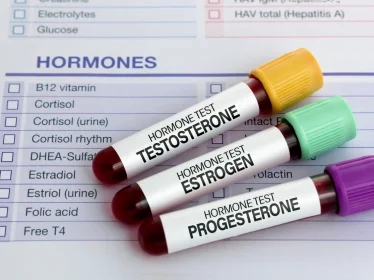
A stroke occurs when the blood supply to and within the brain is interrupted. This deprives the brain cells of oxygen and within minutes they begin to die. A stroke may be caused by either a blocked artery (Ischemic stroke) or the rupturing of a blood vessel (hemorrhagic stroke).
Factors Affecting the Outcome
The location and the severity of the stroke significantly influence the treatment outcomes. The location of the stroke is crucial as different parts of the brain control different functions. A massive or dense stroke usually leads to more brain tissue damage.
Ischemic stroke has better recovery outcome than hemorrhagic stroke. The bleeding in the brain artery during hemorrhagic stroke often leads to more pressure on the brain tissue. The extent of the damage will also determine whether the patient may be left with a mild stroke or a more serious stroke with long-term problems.
5 Post-Stroke Conditions Requiring Physiotherapy
Physiotherapy plays a crucial role in treating the following post-stroke conditions:
- Loss of motor skills or movement due to weakness and paralysis
- Loss of balance or coordination that affect the ability to walk properly
- Loss or altered sensation such as numbness, pins and needles, and tingling
- Loss of visuospatial awareness due to impairment of visual field and perception of space
- Development of spasticity or involuntary contraction of muscles in arms or legs
When Should Rehabilitation Begin?
Physiotherapy should start as soon as the patient's condition is stabilized, while in the hospital. Physiotherapists will work with doctors, nurses, speech therapists and occupational therapists to ascertain a patient's rehabilitation potential. Patients who require a longer rehabilitation period will be referred to a community hospital. After the hospital stay, patients usually continue with periodic outpatient therapy sessions until they regain their functional abilities. The rehabilitation process may take from six months to a year depending on the severity of the patient's condition.
What does Physiotherapy Rehabilitation Involve?
Post-stroke rehabilitation begins with a series of tests to assess the baseline functioning of patients. These tests are:
- Basic cognitive test - cognitive test is an important test to determine how instructions will be given to the patient. It may also affect the accuracy of subsequent tests.
- The level of command a patient can follow (a 1, 2 or 3 step command)
- The ability to orientate to a place, time and day
- Memory
- Range of motions in all limbs
- Strength
- Sensation
- Coordination
- Balance
- Functions
- Turning in bed
- Sitting up from lying down position
- Sitting
- Sit to stand
- Standing
- Walking
- Climbing stairs
These findings are used for goal setting and treatment planning. Short-term and long-term goals are set to motivate patients throughout the rehabilitation period. Caregivers are often also given the training to enable them to assist patients in their daily activities or movements.
Different Treatment Approaches
There are various treatment approaches for motor function recovery.
- Motor relearning approach – relearning lost skills through practice and/or training
- Neurodevelopmental approach (also known as Bobath) - based on a problem-solving method to promote motor learning and motor control in different environments
- Task-oriented approach – to improve upper extremity motor abilities such as hand, arm, shoulder or upper limb
- Constraint-induced movement therapy – using different types of restraints such as a sling or hand splint to improve upper extremity functions
- Biofeedback - using visual feedback to move an impaired limb, for example, training stroke survivors to open a hand by extending his or her fingers and relaxing them.
- Electric stimulators – help rewire the brain to restore some form of dexterity
- Robotics – using robots to assist in walking
- Compensatory – using support aids
Physiotherapy is one of the key components in the spectrum of treatment and rehabilitation of stroke survivors. At Physio Advance, we help mild-stroke survivors restore their physical functions and regain their independence. As such, it is important for patients to attend their rehabilitation sessions regularly and practice the prescribed exercise routines at home.




